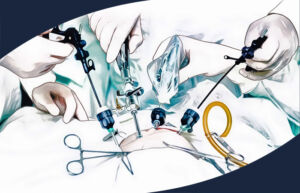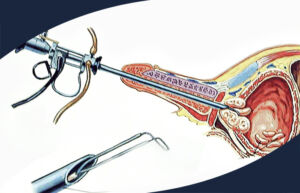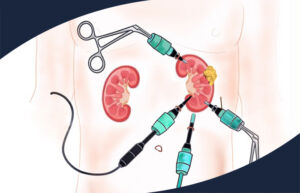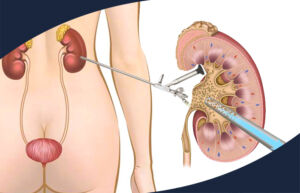ADRENAL GLAND DISEASES
What are the Adrenal Glands?
The adrenal glands are two small organs located above the kidneys. They are triangular in shape and are about the size of a thumb. Because the adrenal glands produce hormones, they are known as the endocrine glands. These hormones play a role in controlling blood pressure, chemical levels in the blood, water use in the body, glucose utilisation, and the “fight or flight” reaction in times of stress. These adrenal hormones include cortisol, aldosterone, adrenaline hormones – epinephrine and norepinephrine – and a small portion of the body’s sex hormones (oestrogen and androgens).
What are Adrenal Gland Problems?
Adrenal gland diseases are relatively rare. The most common reason a patient may need to have the adrenal gland removed is due to excess hormone production by a tumor located within the adrenal. Most of these tumors are small and not cancerous. They are generally known as benign growths that can be removed with laparoscopic techniques. Removal of the adrenal gland may be necessary for certain tumors, even if they do not produce much hormone, such as very large tumors, or if there is a suspicion that the tumor may be cancer, or it is sometimes referred to as malignant. Fortunately, malignant adrenal tumors are rare. An adrenal mass or tumor is sometimes found incidentally in imaging technique such as ultrasonography or computed tomography while the patient is evaluating another problem.
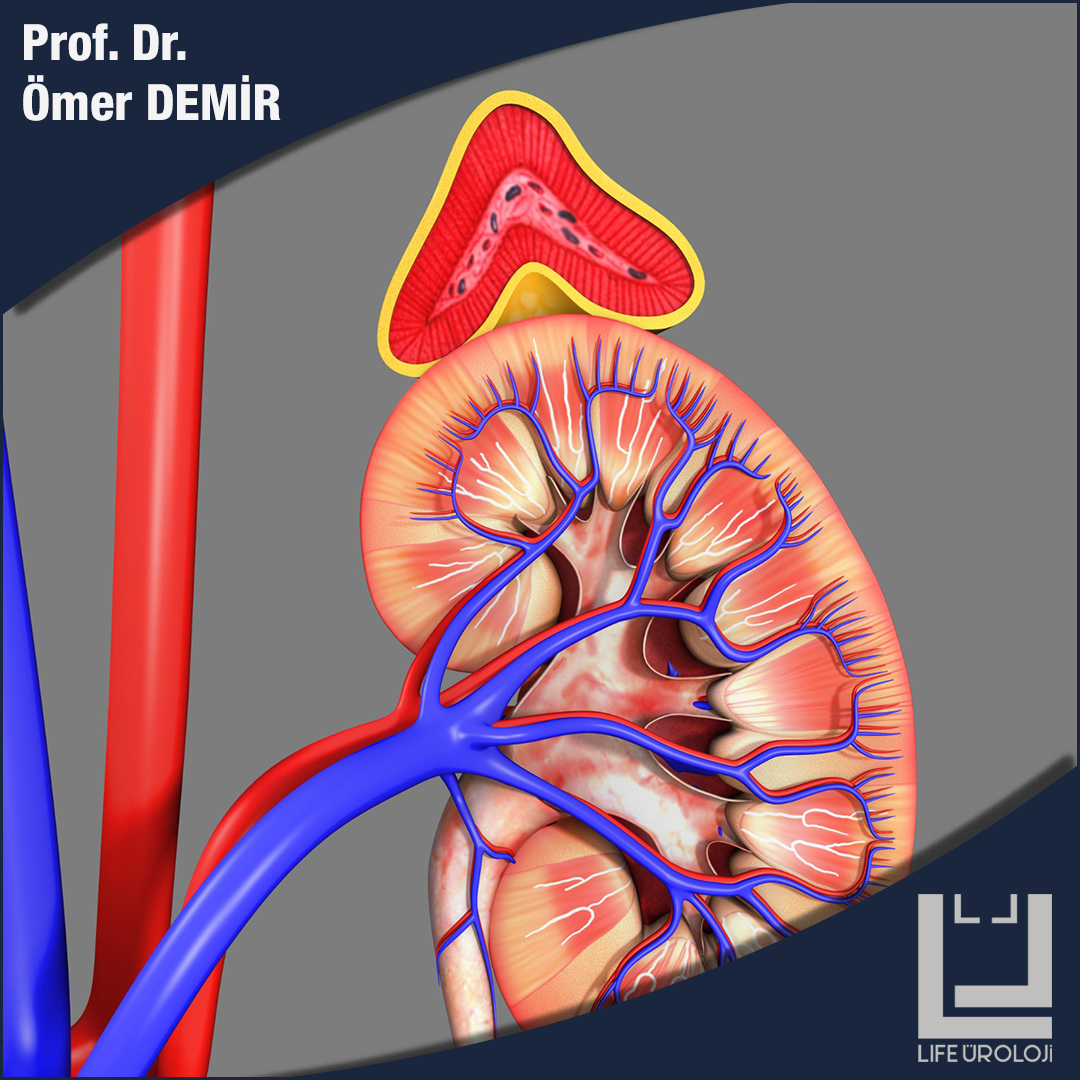
What are the Symptoms of Adrenal Gland Problems?
Patients with adrenal gland problems may have a variety of symptoms related to the abnormal excessive hormone production of the gland. Adrenal tumors associated with excess hormone production include pheochromocytomas, aldosterone-producing tumors, and cortisol-producing tumors. Some of these tumors and their typical characteristics are given below.
Pheochromocytomas produce very high blood pressure and excess hormones that can cause periodic spells characterised by severe headaches, excessive sweating, anxiety, palpitations, and rapid heart rate that can last from a few seconds to several minutes.
Aldosterone-producing tumors cause high blood pressure and low serum (blood) potassium levels. In some patients this can cause symptoms of weakness, fatigue, and frequent urination.
Cortisol-producing tumors cause a syndrome called Cushing’s syndrome, which can be characterized by obesity (especially the face and trunk), high blood sugar, high blood pressure, menstrual irregularities, fragile skin, and prominent cracks. Overall, adrenal tumors account for about 20% of Cushing syndrome cases.
A mass found incidentally in the adrenal may be any of the above tumor types or may not produce any hormones at all. Most incidentally found adrenal masses do not produce much hormones, cause symptoms, are benign and do not need to be removed.
Surgical removal of adrenal tumors is only necessary if:
• If the tumor has been found to produce excess hormones
• Large in size (more than 5 centimetres in diameter)
• If there is any suspicion that the tumor may be malignant.
• Adrenal gland cancers (adrenal cortical cancer) are rare tumors that are usually very large at the time of diagnosis. Removal of these tumors is usually done with open adrenal surgery.
What are the Tests in the Diagnosis of Adrenal Gland Problems?
If an adrenal tumor is suspected based on symptoms or detected by x-ray, the patient should have some blood and urine tests to determine if the tumor is producing excess hormones.
Computed tomography scan, nuclear medicine scan, or magnetic resonance imaging tests are commonly used to locate the suspected adrenal tumor.
Treatment of Adrenal Gland Tumors
Surgical removal of the adrenal gland is the preferred treatment for patients with excessive hormone secreting adrenal tumors and malignant primary adrenal tumors. Although the surgical technique is determined according to the size of the mass and patient characteristics, it can be performed by open or laparoscopic method. However, laparoscopic adrenalectomy is currently the preferred method as a standard.
What are the Advantages of Laparoscopic Adrenalectomy?
In the past, a large incision of 15-20 centimetres in the abdomen, side, or back was required to remove an adrenal gland tumor. Today, removal of the adrenal gland (also known as “laparoscopic adrenalectomy”) with a technique known as minimally invasive surgery can be performed through three or four 1 centimeter incisions. Patients can leave the hospital within a day or two and return to work faster than patients recovering from open surgery. The results of the surgery may vary depending on the type of procedure and the general condition of the patient.
The advantages are:
* Less pain after surgery
* Shorter hospital stay
* Quicker return to normal activity
• Smaller scars
• Less risk of herniation or wound infection
How Is Laparoscopic Adrenalectomy Performed?
• The operation is performed under general anesthesia. The patient is placed in the required position for surgery.
• A cannula (a narrow, tube-like instrument) is inserted at an area approximately 2 cm from the navel.
• A laparoscope (a small telescope) connected to a special camera is inserted through the cannula. This gives the surgeon a magnified view of the patient’s internal organs on a television screen.
• A total of 2 or 3 more cannulas are placed in the abdominal cavity in the upper abdomen or just below the ribs, which allow the adrenal gland to be precisely separated from its attachments. Once the adrenal gland is released, it is placed in a small bag and then removed through one of the incisions. It is almost always necessary to remove the entire adrenal gland to safely remove the tumor.
• Small incisions are closed after the adrenal gland is removed.
What Will I Experience After the Surgery?
You will be under close monitoring after the operation. Remember that although many people feel better within a few days, your body needs time to heal.
After laparoscopic removal of the adrenal gland, most patients can be followed up in a normal inpatient ward. Sometimes a patient with a pheochromocytoma may require admission to an intensive care unit after surgery to monitor blood pressure. Most patients can be discharged from the hospital within a day or two after surgery.
Patients with aldosterone-producing tumors will need to have their serum potassium levels checked after surgery and may need to continue taking medications to control their blood pressure.
Patients with cortisol-producing tumors and Cushing’s syndrome will need to take prednisone or cortisol pills after surgery. As the remaining normal adrenal gland returns to sufficient cortisol hormone production, the dose is reduced over time.
Patients are encouraged to do light activities at home after surgery.
Post-operative pain is usually mild and patients may need pain relievers or pain relievers.
Most patients can resume normal activities within a few weeks, including driving, climbing stairs, light lifting and working.
What complications can occur during or after the operation?
As with any operation, there is a risk of complications. Complications during the operation can include:
Reaction due to general anaesthesia
High blood pressure (especially in pheochromocytoma)
Bleeding
Injury of other organs (organs adjacent to the adrenal glands)
Wound problems, blood clots, heart attack, and other serious complications are extremely rare after laparoscopic adrenalectomy.

